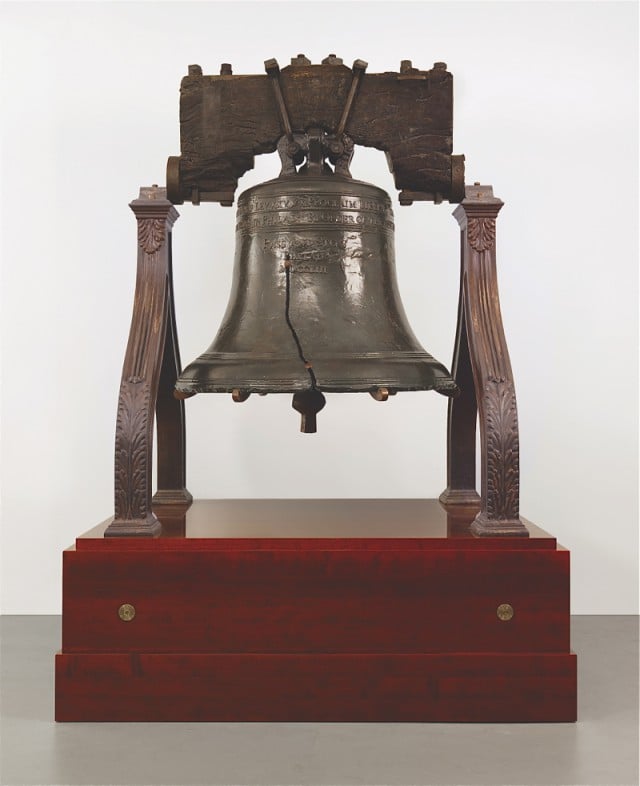Art & Exhibitions
Jeff Koons’s Art Rings A Bell
THE DAILY PIC: In duplicating a historical icon, what is the artist attempting to do?

THE DAILY PIC: In duplicating a historical icon, what is the artist attempting to do?


The Daily Pic goes Koons-crazy once again, and probably for the last time for a while. This week, I’m on about one of Jeff Koons‘s latest pieces: an utterly perfect, laser-scanned, same-size, same-materials facsimile reproduction of the Liberty Bell in Philadelphia, now on view in the artist’s survey in New York.
What is this thing that Koons has given us? A Duchampian readymade? Not in the normal sense, since that tradition almost always involves modest, un-arty objects presented as art, whereas Koons’s bell started life as an unavoidable cultural icon, already on view in a museum made just for it. And anyway a readymade is supposed to start life as just that—as something ready-made for some non-artistic use. Whereas Koons’s duplicate bell exists only as a laboriously crafted fine-art object whose meticulous making is part of its point.
Maybe Koons’s piece represents precisely the opposite of Duchamp’s artifying move. We may need to think of Koons’s bell as closer to a strictly documentary object—as something like a purely reproductive photo that, in this case, happens to be rendered in three dimensions. But if his bell is all and only about artistic ostension, shouldn’t its finger be pointing at something we don’t already know by heart? Ostension is normally about picking out something compelling or notable or new in the world, but who among us needs to be told that the Liberty Bell exists, or is worth checking out?
I’d be tempted to place this artwork squarely in the trompe-l’oeil tradition, except that Koons’s bell doesn’t yield that genre’s normal “aha!” moment, where we realize that we’re looking at a representation instead of the real thing. (His cat-in-a-sock and Play-Doh pieces do yield that frisson.) When a work is perfectly duplicative, its status as representation approaches zero: It doesn’t show something else in the world; to all intents and purposes it is that other object.
Which makes me wonder if we have to see Koons’s bell as working in a substitutive, functional mode, where one artifact replaces another that looks the same, but that we can’t get access to. (Alexander Nagel, who wrote one of the Whitney’s catalog essays, has spelled out that tradition.) Such “substitution” is what’s going on, for instance, with the many copies of the Mona Lisa, and I recently came across a facsimile Liberty Bell fulfilling precisely that role: It was shipped off to Czechoslovakia in 1919 to celebrate–and guarantee–the founding of that state as a democracy. But what possible substitutive function can a second Liberty Bell play for a bunch of American museumgoers in the Whitney Museum of American Art?
Once more, Koons, the aesthetic agnosiac – the Man Who Mistook His Bell For Fine Art – presents us with an utter muddle of crossed categories and mixed messages. Yippee. (Private collection; © Jeff Koons)